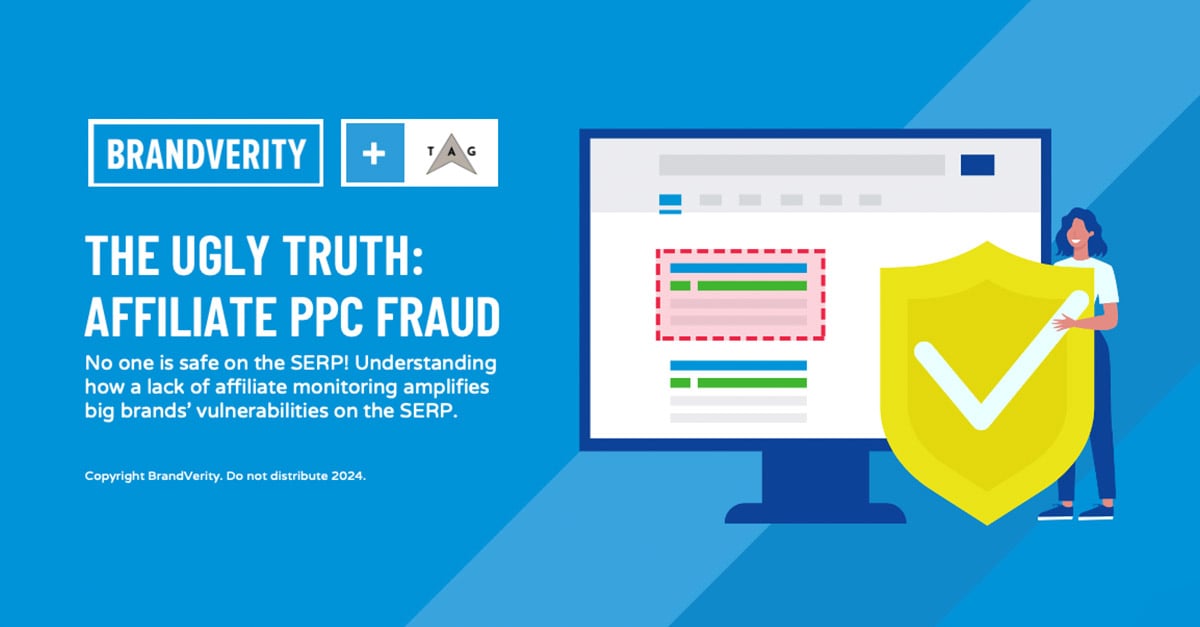Recently, brands have faced increasing threats from imposter advertisers on major search engines like Google or Bing, as well as social media platforms like Meta and TikTok. And despite efforts by media giants like Google to combat fraudulent ads, the problem persists, leaving brands vulnerable to scams, trademark violations, and other forms of digital advertising fraud. Long story short: Brands are losing out big time and paying the literal price for bad actors on search engines more than ever before.
In the dynamic realm of paid search advertising, brand bidding serves as a cornerstone strategy for businesses to secure prime real estate on search engine results pages (SERPs) and capture valuable leads. However, this landscape has its pitfalls, with bad actors employing brand bidding and ad hijacking tactics that can undermine legitimate advertisers' efforts and investments, including instances of affiliates bidding on brand names, making it crucial for advertisers to diligently police their ads.
Affiliate PPC fraud is a growing problem plaguing every type of digital marketer across every vertical and often lurks undetected until significant damage has been done. This type of fraud involves bad-acting affiliates who use pay-per-click (PPC) advertising to siphon off unearned commissions from brands. The deceptive practices range from creating ads that mimic legitimate brand advertisements to using sophisticated techniques like masking referral links through multiple redirects. These ill-intended activities not only increase the cost per click for the brand but they also dilute the effectiveness of genuine affiliate marketing efforts. But the result is always the same: substantial financial drain and a skewed understanding of campaign performance.
In today's digital age, your brand's online presence is more important than ever. With the internet becoming the go-to source for information, products, and services, your digital reputation can make or break your business. This article delves into the world of online brand protection and provides insights into how you can safeguard your digital reputation effectively.
The internet offers countless opportunities for exposure but also presents risks that can tarnish your brand's reputation. To ensure the safety and integrity of your brand, you must employ effective strategies that safeguard it from threats and misuse.
In the vast landscape of online marketing, affiliates play a crucial role in driving traffic and sales to businesses. However, there’s still an ongoing concern regarding nefarious affiliates’ brand-bidding activity on the SERP. Namely, that some affiliates exploit Google's tools as an excuse for dubious tactics.
Paid search is a powerful tool for businesses to reach relevant audiences online. When used effectively, it can help businesses increase brand awareness, drive traffic to their website, and generate leads and sales. However, there is a dark side to paid search: bad actors can use your brand name to create fraudulent ads that can damage your brand's reputation and impact your bottom line.
Affiliate compliance is the process of ensuring your affiliate partners follow the guidelines outlined in your affiliate marketing program terms. This process helps to prevent legal issues and protects your business’ reputation online.
An Introduction to Affiliate Compliance
Affiliate marketing programs have the potential to add great value for a company, but a few competent scammers can quickly and vastly reduce their profitability. The technical sophistication of abusive affiliates often far outweighs the merchant’s reciprocal knowledge, allowing marketing fraud to run rampant.
This guide aims to provide extensive information about fraudulent affiliate tactics so that merchants can better understand how affiliate abuse operates, the impact of it on a company, and methods for detection and prevention. We hope that this guide can serve as a step towards an overall reduction in affiliate abuse by granting merchants a deeper understanding of the ways that unethical affiliates manipulate the system.
At BrandVerity, we provide merchants and affiliate managers with tools to detect online brand and trademark abuse. Two services, PoachMark and the Affiliate Watchlist, grant clients effective management tools for their affiliate programs by detecting affiliate abuse of paid search policies and creating a continually updated list of affiliate abusers. If you have any questions or are interested in partnering with BrandVerity, please contact us.
What Is Affiliate Policy Monitoring?
Affiliate policy monitoring, or affiliate program terms monitoring, is the practice of proactive tracking and analysis of the activities affiliate partners engage in. This includes the monitoring of website content the affiliate writes, ad placements the affiliate bids on, and social media posts the affiliate makes. The goal of affiliate monitoring is to protect a brand's reputation and integrity while ensuring all affiliate partners are abiding by the rules.
An affiliate marketing program is a marketing strategy in which a brand partners with a third-party called publishers, or affiliates, to promote its products or services in exchange for a commission on sales.









.jpg)